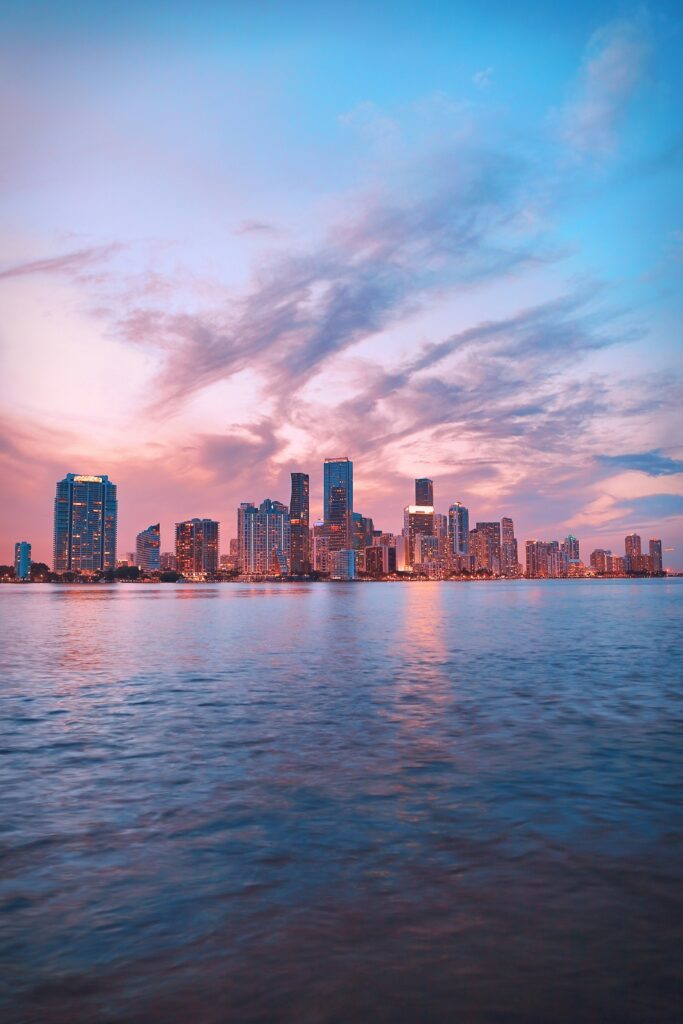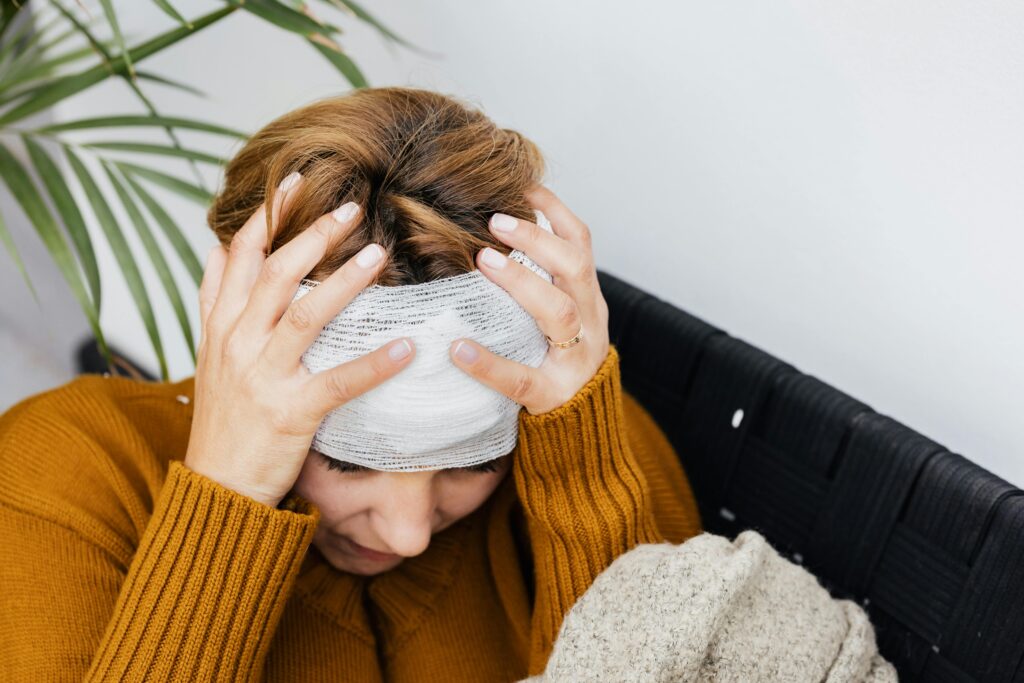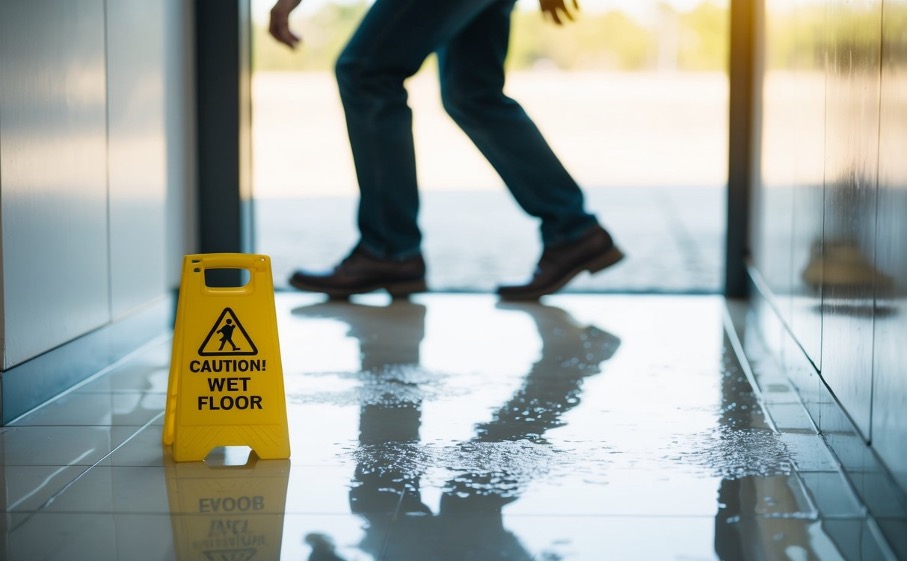Now Reading: Injuries in Public Places: Who’s Liable and What You Need to Know
-
01
Injuries in Public Places: Who’s Liable and What You Need to Know

Injuries in Public Places: Who’s Liable and What You Need to Know
Injuries in public places can lead to complex legal dilemmas regarding liability. Property owners, whether private businesses or local governments, often bear responsibility for maintaining safe environments for visitors. When accidents occur due to negligence, identifying the liable party is crucial for seeking compensation.
Understanding the circumstances surrounding an injury is essential to determining liability. Factors such as the location, type of injury, and specific actions leading to the incident significantly influence the outcome. Victims need to be aware of their rights and the steps necessary to protect their interests.
Navigating the legal landscape of public injury claims can be challenging. Knowledge of local laws, deadlines for filing claims, and potential defenses is necessary for anyone involved in such cases. Being informed can make a significant difference in the pursuit of justice and compensation.
Understanding Liability in Public Places
Establishing liability in public places involves understanding the legal concepts that govern how property owners maintain their spaces. Key factors include the definitions of premises liability and the role of negligence.
Defining Premises Liability
Premises liability refers to the responsibility of property owners to ensure their premises are safe for visitors. This legal concept varies based on the type of visitor: invitees, licensees, and trespassers.
- Invitees are those invited for business purposes and are owed the highest standard of care.
- Licensees enter for social reasons and require a lower duty of care.
- Trespassers receive minimal protection but may be owed a duty if the owner causes willful harm.
Property owners, including businesses and municipalities, may be liable for injuries if they fail to address hazards. Common scenarios include wet floors, poor lighting, and broken sidewalks. An accident law firm may assist victims in establishing a property owner’s responsibility.
The Role of Negligence
Negligence plays a crucial role in determining liability for injuries in public places. To establish negligence, the injured party must prove four elements: duty, breach, causation, and damages.
- Duty: The property owner had an obligation to maintain a safe environment.
- Breach: The owner failed to meet that obligation, either through action or inaction.
- Causation: The breach directly caused the injury.
- Damages: The injured party suffered actual harm or losses.
Assessing negligence can be complex. Scottsdale car accident lawyers often encounter similar principles when evaluating road accidents, as they assess duty and negligence related to road conditions. A thorough investigation is essential in establishing liability in public injuries.
Common Types of Injuries in Public Places
Injuries occurring in public places often stem from various hazards. Understanding the common types of these injuries is vital for awareness and prevention.
Slip and Fall Incidents
Slip and fall incidents are one of the leading causes of injuries in public places. Wet floors, uneven surfaces, and loose mats can all contribute to these accidents.
Factors such as poor lighting or inadequate signage indicating hazards can increase the risk. When individuals slip and fall, they may sustain injuries ranging from minor bruises to severe fractures or head injuries.
Property owners have a responsibility to maintain safe environments. Regular inspections and prompt repairs can help minimize risks related to slips and falls.
Structural Hazards
Structural hazards include issues such as broken stairs, unsecured handrails, or damaged sidewalks. These hazards often result in serious injuries to individuals navigating a public space.
For example, a broken step can cause a person to lose their balance, leading to falls that may result in severe injuries. Inadequate maintenance of these structures is often at the heart of such incidents.
Landlords and property managers must ensure that structures are safe. Regular maintenance checks can mitigate these hazards and help protect visitors.
Weather-Related Accidents
Weather-related accidents often occur due to slippery surfaces caused by rain or ice. Snow accumulation can also create hazardous conditions, especially if not cleared promptly.
Individuals may slip or fall on wet or icy sidewalks, resulting in various injuries. It is critical for property owners to address weather conditions actively, ensuring that walkways are safe for public use.
Proper signage and timely snow removal are essential in minimizing the risks associated with inclement weather. Being proactive can prevent injuries and enhance public safety.
Determining Responsibility
Establishing liability in public place injuries involves analyzing the roles of property owners and occupiers. Understanding the nuances of legal responsibility is crucial for affected individuals and their potential claims.
Owner vs. Occupier Liability
Liability often hinges on whether a property owner or the occupier is responsible for maintaining the premises. Owners have a duty to ensure that their property is safe for visitors. This includes addressing known hazards.
Occupiers, on the other hand, may also hold responsibility, particularly if they have control over the space. For instance, a tenant managing a storefront must maintain safety and address hazards within their leased area.
In cases where safety protocols were ignored, both parties might bear some liability. An accident law firm can help clarify these distinctions and determine who can be held liable.
Multiple Party Responsibility
In some incidents, multiple parties may share responsibility for injuries. This can arise when several entities contribute to a hazardous situation. For example, a property owner might neglect maintenance while a contractor fails to follow safety standards during renovations.
The legal concept of comparative negligence may apply, where each party’s degree of fault is assessed. Affected individuals could seek compensation from multiple sources, depending on the circumstances.
It is crucial for injured parties to gather evidence and witness testimonies. An accident law firm can assist in navigating the complexities of claims involving multiple responsible parties. Documentation and legal guidance will help establish a case for liability.
Understanding the Duty of Care
In public spaces, property owners and operators have a legal obligation known as “duty of care.” This means they must maintain a safe environment for visitors. If they fail to identify and rectify hazards, they may be held liable for injuries.
The specific standard of care required aims to protect individuals from foreseeable risks. For example, poorly maintained sidewalks or inadequate lighting can lead to accidents. If an individual is injured due to such negligence, an accident law firm may assist in pursuing a claim against the responsible party.
Types of Hazards and Injury Claims
Various hazards can lead to injuries in public places. Common examples include wet floors, broken railings, or insufficient signage. Each case’s specifics define the basis for claims against property owners or municipalities.
Injuries often arise from slips and falls, trip hazards, or inadequate supervision in recreational areas. Legal actions may cover medical costs, lost wages, and pain and suffering. Consulting with an accident law firm can help navigate these complexities and advocate for fair compensation based on the incident’s circumstances.
Evidence Collection and Documentation
Collecting evidence at the scene of an injury is crucial. Proper documentation can support a claim and help establish liability. It’s essential to gather various types of evidence effectively.
Gathering Evidence at the Scene
First responders should prioritize safety before collecting evidence. Taking photographs is important. Capture images of the injury, the surrounding area, and any potential hazards.
Creating a detailed list of witnesses is also beneficial. Include names, contact information, and statements if possible.
Written notes detailing the incident are valuable. Describe what happened, any signs present, and weather conditions. This documentation helps establish context and can be vital in legal proceedings.
Medical Records and Reporting
Medical records play a significant role in personal injury cases. It’s essential to seek immediate medical attention after an injury.
Documents such as hospital admission reports and follow-up visit summaries are critical. They provide a timeline and substantiation of the injuries sustained.
Detailed medical documentation should include treatment plans, diagnoses, and any prescribed medications. This information supports claims related to medical expenses and impacts on daily life.
Maintaining organized medical records ensures easy access for legal proceedings. This preparation aids in establishing a link between the incident and medical conditions.
Legal Actions and Proceedings
Navigating legal actions after an injury in a public place can be complex. Understanding the steps involved helps victims make informed decisions about their claims.
What to Do Immediately After an Injury
Prompt action following an injury is crucial. Gather evidence by taking photographs of the scene, injuries, and any contributing factors.
Next, seek medical attention, even for minor injuries, to document the event and ensure proper treatment.
It is also important to collect contact information from witnesses who may support the case later. Reporting the incident to the property owner or manager is vital; obtaining a written account is beneficial.
Filing an Injury Claim
To initiate a legal process, a victim must file an injury claim. This often starts with gathering evidence, including photographs, witness statements, and medical records.
An accident law firm typically assists in compiling this information. They help determine the appropriate party to hold liable, whether it’s a business, property owner, or government entity.
Once the evidence is collected, the claim is submitted to the insurance company of the responsible party. The insurer will review the details and respond, potentially leading to negotiations or settlements.
The Litigation Process
If a fair settlement isn’t reached, the case may proceed to litigation. This involves filing a lawsuit in civil court, where the plaintiff formally claims damages.
During this stage, both parties engage in discovery. This involves exchanging evidence and documents to prepare for trial. Pre-trial motions may occur, including requests to dismiss the case or compel evidence.
If the case goes to trial, it will be heard before a judge or jury. They will determine liability and any awarded damages based on the evidence presented. This process can be lengthy and requires thorough preparation from all involved parties.
Insurance and Injury Claims
Navigating insurance claims after an injury in a public place involves understanding interactions with insurance companies and recognizing coverage limitations. Key aspects include effective communication with insurers and knowing what policies apply.
Dealing with Insurance Companies
Effective communication is crucial when dealing with insurance companies. First, individuals should document all interactions, including dates, names of representatives, and the content of discussions.
Claimants often need to provide detailed accounts of the incident, including photographs, witness statements, and medical records. It is important to respond promptly to any requests for information. Delays can complicate the claims process.
Additionally, understanding the terminology used by insurance adjusters can help individuals negotiate better. This includes knowing terms like “deductible,” “liability,” and “claims adjuster.” If a claim is denied or undervalued, individuals have the right to appeal the decision.
Insurance Coverage and Limitations
Insurance policies may vary significantly in terms of what they cover. Most general liability policies cover injuries occurring in public places, but exclusions can apply.
Common limitations might include specific types of injuries or situations, such as those occurring during illicit activities. For instance, a policy may not cover injuries resulting from reckless behavior.
It is advisable for individuals to review their policy carefully, paying attention to the specific conditions and limitations. They should also consider the possibility of additional coverage, such as umbrella insurance, which provides an extra layer of protection.
Understanding Comparative Fault
Comparative fault is a crucial concept in personal injury cases, particularly regarding liability in public places. It defines how responsibility is shared among parties involved in an accident.
Comparative vs. Contributory Negligence
Comparative negligence assigns fault proportionally based on each party’s contribution to the incident. For example, if a person is injured in a public place and is found to be 30% at fault, they can still recover 70% of their damages. In contrast, contributory negligence can bar recovery altogether if the injured party is found to be even slightly at fault, meaning that just 1% fault could eliminate the chance to claim damages.
The key distinction lies in how these systems evaluate fault. Many states have adopted comparative negligence, recognizing it as a more equitable method to determine liability. Understanding which system applies in a specific jurisdiction is crucial for anyone involved in such cases.
How Comparative Fault Affects Damages
Under comparative fault, the total damages awarded to a plaintiff may be reduced by their percentage of fault. For example, if the total damages are $100,000 and the plaintiff is 20% responsible, they would receive $80,000.
Some jurisdictions employ a “modified comparative fault” rule, where recovery is barred if the plaintiff is 50% or more at fault. Thus, the impact of comparative fault directly influences the compensation available to an injured person. Understanding these implications can guide individuals on what to expect in potential claims.
Compensation for Injuries
When injuries occur in public places, determining liability is crucial for securing compensation. There are specific types of damages that an injured party can claim, and various methods are used to calculate compensation amounts.
Types of Damages
In personal injury cases, damages can be classified into two main categories: economic and non-economic.
- Economic Damages: These cover measurable costs such as medical expenses, lost wages, and property damage. Medical costs may include hospital bills, rehabilitation fees, and future medical care.
- Non-Economic Damages: These address intangible losses, including pain and suffering, emotional distress, and loss of enjoyment of life. While not easily quantified, they can significantly impact an individual’s quality of life.
Punitive damages may also be awarded in certain situations to punish the at-fault party for gross negligence.
Calculating Compensation Amounts
To calculate compensation, several factors come into play. Legal professionals often utilize various methods to assess the extent of damages.
- Medical Expenses: A thorough examination of all medical records and bills is essential.
- Lost Income: Calculating lost wages involves reviewing pay stubs, tax returns, and future earning potential.
- Pain and Suffering: This can be evaluated using multipliers based on the severity and duration of the injury.
Many individuals seek guidance from an accident law firm to navigate these calculations effectively. This expertise can help ensure that all aspects of a case are considered to secure a fair settlement.
Hiring Legal Representation
When dealing with injuries in public places, hiring legal representation can be crucial. Understanding the advantages of engaging an experienced attorney and knowing how to choose the right one can significantly impact the outcome of a case.
Benefits of an Accident Law Firm
An accident law firm specializes in handling cases related to injuries. These firms provide several advantages for clients, including expertise in navigating complex legal processes.
- Knowledge of Laws: They understand local laws and regulations, which can be crucial in determining liability.
- Negotiation Skills: Experienced lawyers can negotiate settlements effectively with insurance companies, often securing better compensation than individuals might achieve on their own.
- Resource Access: Law firms often have access to resources like accident reconstruction experts and medical professionals, which can strengthen a case.
Clients benefit not only from legal advice but also from the support and guidance of dedicated professionals.
Choosing the Right Lawyer
Selecting the right lawyer is critical for effective representation. Factors to consider include:
- Specialization: Look for attorneys who focus on personal injury and have experience with cases similar to the client’s. A Scottsdale car accident lawyer may be particularly beneficial for vehicle-related incidents.
- Reputation and Reviews: Research the firm’s reputation through client reviews and testimonials. A well-regarded firm will demonstrate a history of successful outcomes.
- Initial Consultation: Many lawyers offer free consultations. This allows potential clients to ask questions and gauge comfort levels before making a decision.
Taking time to evaluate these aspects can lead to a more informed choice in legal representation.
Preventive Measures and Safety Tips
Taking proactive steps can significantly reduce the risk of injuries in public places. Implementing safety measures and understanding legal preparedness are essential for individuals and property owners alike.
Public Safety Guidelines
Public safety is a collective responsibility. Key guidelines include:
- Regular Inspections: Property owners should conduct routine assessments of their premises. This helps identify hazards like loose floor tiles, uneven walkways, and inadequate lighting.
- Clear Signage: Signs indicating potential hazards, such as wet floors or uneven surfaces, are vital. They alert visitors to take extra caution.
- Emergency Exits: Clearly marked and accessible emergency exits are critical. Regular drills ensure everyone knows how to evacuate safely.
- Training Staff: Employees should undergo safety training. This ensures they can assist visitors during emergencies or manage hazards effectively.
By adhering to these guidelines, the likelihood of accidents can be minimized.
Legal Preparedness
Understanding legal responsibilities is crucial for both individuals and businesses. Key aspects include:
- Know the Laws: Familiarity with local liability laws helps individuals understand their rights and responsibilities. Each jurisdiction has specific regulations regarding safety standards.
- Insurance Coverage: Having adequate liability insurance is essential. This protects property owners in case of injuries occurring on their premises.
- Incident Reporting: It is important to document incidents promptly. Accurate records facilitate legal claims and provide essential information for liability assessments.
- Seek Legal Advice: Consulting with an attorney knowledgeable in premises liability can clarify legal obligations. This ensures proper steps are taken to mitigate risks.
These measures enhance preparedness and can protect against potential legal repercussions.
Conclusion
Injuries in public places can lead to complex legal questions about liability. Many individuals may wonder who is responsible when accidents occur in areas such as sidewalks, parks, or shopping centers. Understanding the nuances of premises liability can help victims determine their rights and seek appropriate compensation. A crowded public space with a person slipping on a wet floor, surrounded by onlookers and a sign indicating the area is under maintenance
When someone is injured in a public space, the property owner’s duty of care comes into play. This duty varies based on the type of facility and the circumstances surrounding the incident. Familiarity with local laws and regulations is crucial for those involved in such cases, as they directly impact the outcome of liability claims.
Navigating the aftermath of an injury in a public place can be overwhelming. Knowing what to do and whom to approach for legal advice can significantly influence the direction of a claim. The reader will find valuable insights into legal responsibilities and the steps to take following an injury in the following sections.










